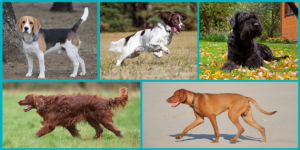 We are still trying to identify the genetic change that causes Primary Hyperparathyroidism (PHPT) in the Keeshond. It is proving to be much more challenging than initially anticipated, which may explain, at least in part, why the original research was never completed and published.
We are still trying to identify the genetic change that causes Primary Hyperparathyroidism (PHPT) in the Keeshond. It is proving to be much more challenging than initially anticipated, which may explain, at least in part, why the original research was never completed and published.
As part of the original Give a Dog a Genome project, we used short-read based Whole Genome Sequencing (WGS) to sequence a PHPT case and an epilepsy case (as a PHPT control). We have sequenced a further case and a progressive retinal atrophy (PRA) case as a control, giving us two cases and two controls. These data have enabled us to independently identify the chromosome that harbours the causative genetic mutation for PHPT, however we have been unable to precise variant.
We have recently been awarded a small grant from CamVet to undertake long-read sequencing of the candidate region in an attempt to identify additional variants. Preliminary data suggests that the region of interest is highly structurally complex and very difficult to interrogate, but sequencing and data analysis is ongoing.
 Alongside our current genetic investigations of
Alongside our current genetic investigations of  In recent years multiple dogs of the Old English Sheepdog (OES) breed have been diagnosed with an ocular (eye) disease that can affect multiple parts of the eye and is therefore known as multiocular defect (MOD). Most affected dogs suffer from cataracts, but additional abnormalities can include any of the following:
In recent years multiple dogs of the Old English Sheepdog (OES) breed have been diagnosed with an ocular (eye) disease that can affect multiple parts of the eye and is therefore known as multiocular defect (MOD). Most affected dogs suffer from cataracts, but additional abnormalities can include any of the following: